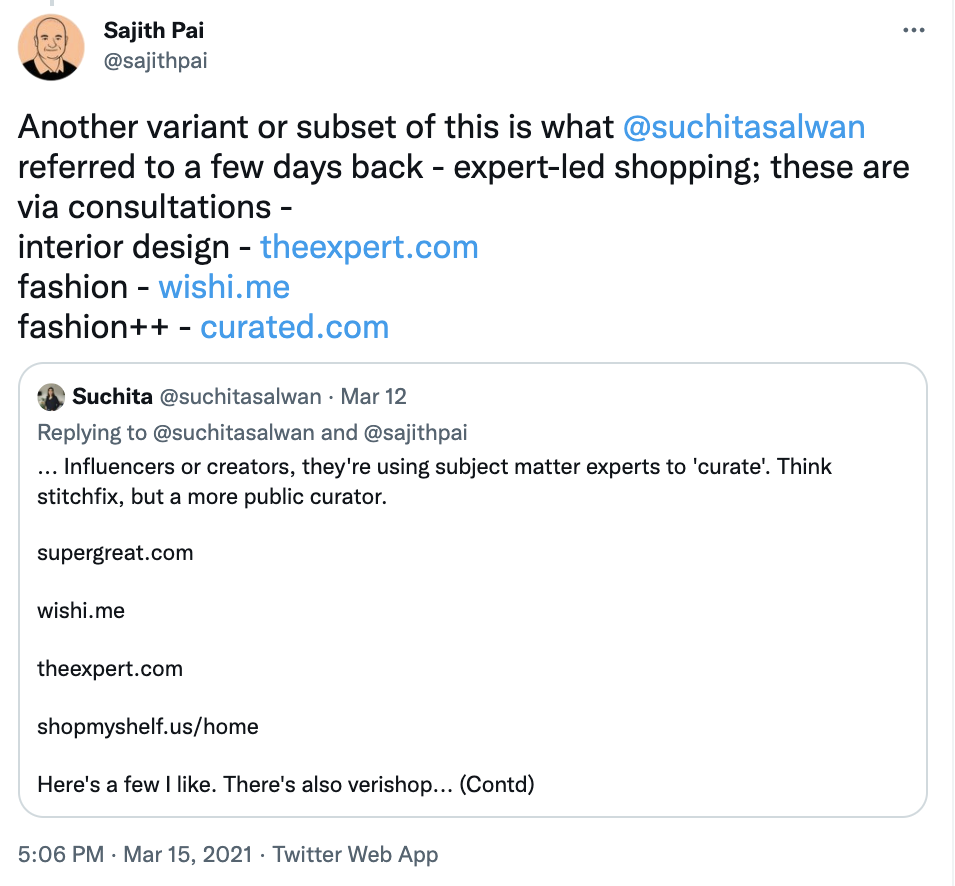Thinking that there are native models for each ecommerce category.
Let us start w this useful framework (via Niraj Shah of Wayfair from his podcast on Colossus).
Amazon cracked #1 through marketplace. This is the native model for internet ecommerce, but in reality it is the native model for a certain kind of good. One that fits into cartons and can be loaded into vans. See Benedict Evans’ clever post on the 3 types of ecommerce here – boxes, trucks and bikes.
#2 – grocery – is solved via the now native model of dark stores + limited SKUs + bike delivery around a constrained geographic area (typically 2×2 sq km or so) to enable 10-15min delivery. This dark store model is now the dominant + native model that helps us crack grocery. There is huge excitment around QCommerce / 10min delivery as witnessed in hyperfunding for GoPuff, Rappi, Gorillas, Jokr, Dunzo, Zepto etc., because a native model for grocery commerce has been cracked. PMF can be achieved much faster with this model.
Perhaps #3’s native model is what Shein is pioneering.
Above via Rest of World.
Shein’s LATR model for instance where they rinse & repeat at scale is perhaps a great model to overcome inventory challenges that plague fashion. Livestreaming seems to work well too but for China largely. China seems to have arrived at a couple of native models for fashion.
For #4 – home – given that this is an unbranded + high order value + complex product / high involvement category, perhaps the native model is expert-assisted or concierge commerce – curated / theexpert / wishi etc. Here is an old tweet.

That said I am still not 100% sure on whether there is only one native model for Fashion or Home. Perhaps there are two or three. For instance, Meesho was one solution for India – you can see it as a kind of weak expert network. The reseller provides curation of a kind. That said, Meesho has gone B2C now! Livestreaming is possibly another native model that has worked well in China.
As a reply I got on twitter says, the native models for #3 and #4 are still emerging; still we can see early glimpses and signs of what they could be.
To summarize, there are ‘native’ business and ecommerce models for different categories necessitated by the nature of the category (physical size), psychological process involved, type of consumer experience needed to differentiate, and complexity of purchase.
These are
- Branded, commodity goods – Amazon’s marketplace model
- Grocery – Quick commerce / Dark Stores (Rappi, GoPuff)
- Fashion – SheIn + Livestreaming
- Home – Expert-assisted commerce (Curated, TheExpert etc)
That said, we are still in the early days on #3 and #4. We can see glimpses of what the native model could be, but we haven’t settled on them yet!
